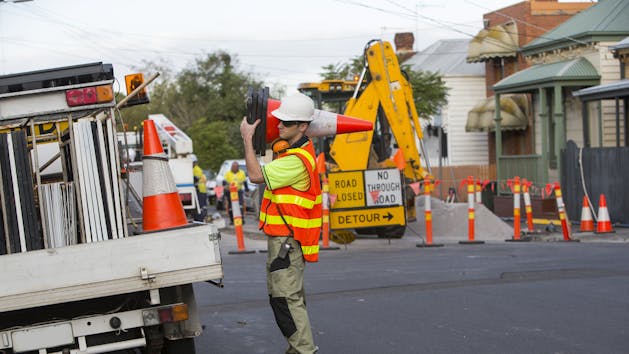Find the right solution for your business with our free Fleet Management Buyer’s Guide.
Telematics Drives Macro and Micro Data Insights
In the age of Big Data, the availability of solutions for collecting data is wide-spread. The real challenge for businesses is in filtering and discerning actionable insights from the mountains of data collected. For field service organizations, the ability to learn from statistics, situations and scenarios related to vehicles, drivers and customers is an important asset in the drive to streamline operations, improve utilization and rein in costs.
However, this means being able to analyze a variety of data at the macro and micro level and apply the results toward actionable change. Telematics technology can help organizations derive the greatest benefit from collected data, ultimately providing real-time insights into fleet patterns and business performance. In this post we’ll highlight what macro and micro data are, and how you can leverage telematics to gather it.
Distinguishing between macro and micro data
In a general sense, if we relate it to a photograph or painting, macro data can be thought of as the “big picture” in its entirety, while micro data can be thought of as the smaller images, lines, brush strokes or pixels that group together to form the big picture.1
Translating this idea into terms that apply to field service organizations, one example of macro data might be total hours driven by all fleet vehicles in a week. One piece of micro data (making up this macro data set) might be the miles one vehicle drove to and from each job on a specific day of that week. Here are a few more examples of macro and micro data sets applicable to field service organizations:
Macro
- Average monthly fleet fuel consumption
- Number of fleet miles driven in a week
- Total quarterly fleet maintenance costs
Micro
- Time spent idling per vehicle per hour each day
- Specific route one vehicle took to one job on one day
- Number of harsh braking incidents for a specific driver
Whatever you’re trying to see more clearly in terms of service, maintenance, safety, costs or other measurement, can be accomplished by using micro data to build a macro data “picture”. And the good news is that micro data points can be used to build multiple macro data sets1, making this sort of analysis a valuable tool for field service organizations. However, the key to analytics success lies in having the right automation and technology in place to gather and view accurate, real-time information to begin with. This is where telematics comes in.
Using telematics to gather macro and micro data
Fleet management technology automates the function of data gathering, streamlining the process of analyzing information and helping field service organizations to arrive at data-driven insights. It offers an array of functions and capabilities that help you better track your vehicles, workers and costs, whether you’re looking to view big picture data around average yearly fuel consumption, or micro data around a particular driver’s overtime on a particular day. Here’s an overview of the information a telematics solution can help you gather:
Worker, Vehicle and Workflow Data
- See all team members in a single online dashboard that allows for easy data filtering
- Monitor worker locations and movements with GPS tracking to ensure drivers aren’t taking unauthorized breaks or detours
- Manage jobs more efficiently with data-rich field dispatch software
- Streamline work order management – send the right person to the right place at the right time
- Access hi-res smart clustering maps to see current status of all vehicles, workers and equipment
- More easily track vehicle maintenance and state of repair
- Set alerts based on a condition (speeding, idling, harsh braking, etc.) and who should receive it
Cost and Efficiency Data
- Track essential business details (precise job costs, available workers and equipment, etc.)
- Use telematics to deploy assets more quickly and effectively
- Share accurate service time estimates and respond to customer requests more quickly
- Use system to find faster routes and schedule more efficient stops
- Enable drivers and technicians to communicate easily and offer customers up-to-the-minute ETAs
- Sync job data with back-office billing to streamline turnaround times, improve cash flow and resolve potential customer disputes
- Search available time slots in seconds to choose the most cost-effective time to book in a new job
- Quickly reroute mobile workers to new jobs in real time
- Access instant traffic data to help drivers avoid unnecessary delays
- Improve accuracy of preventative maintenance programs to reduce costs
Performance Data/Opportunities for Improvement
- Analyze operations to improve routes, labor costs, asset utilization and downtime
- Use advanced tools to more accurately plan for capacity and minimize overtime
- Review historical work performance to reduce unnecessary miles and keep field technicians on time
- Easily review progress toward achieving and maintaining KPIs or budgets goals
- Securely store fleet data for up to two years and run historical reports to uncover insightful trends
- Use real-time plan v. actual analysis to measure actual performance against planned work
Factors to consider when purchasing a telematics solution
Not all telematics solutions are created equal. When looking to invest in, or upgrade, a field service management solution to improve data analytics for your organization, it’s good to keep the following points in mind:
Reporting
Obviously, one of the greatest benefits of fleet management software is its ability to automate reporting for convenient data analysis. But be sure to look for a solution with an easy-to-use reporting setup and format that specifically matches your organization’s needs – one that can actually provide the key information points you need to make better business decisions.
User interface
The amount of macro and micro data you’ll collect can seem daunting, so it’s imperative that it can be filtered and organized correctly in real time. And it needs to be presented in a way that makes it easily digestible and actionable, especially given that the next generation of field service workers are tech-savvy and collaborative with high expectations for the use and performance of technology.
Customization
Some providers might offer limited features that are highly customizable to the field service organization, while others might offer plentiful features with limited customization. Be sure to thoroughly vet your options to make sure you’re able to get the functions and features you need, delivered in a way that works for your organization’s workflow, culture and industry.
To get the most out of your telematics solution for macro and micro analysis and the streamlining of field service operations, visit Verizon Connect today.
Source
1https://blog.hubspot.com/customers/talking-data-part-2-macro-micro-data
Find out how our platform gives you the visibility you need to get more done.




